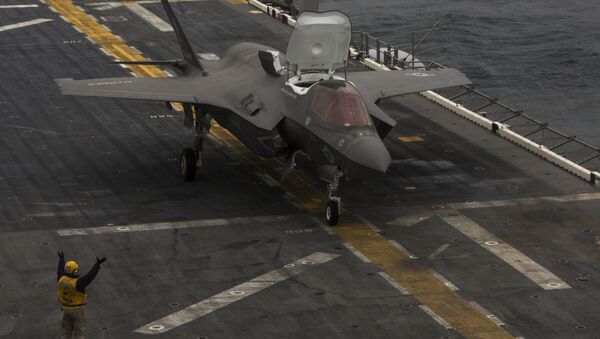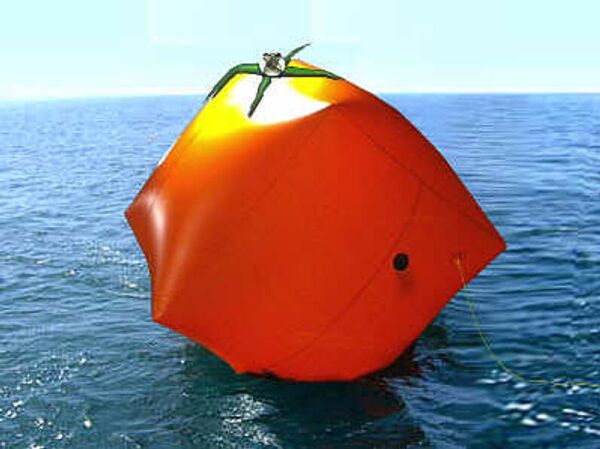Off the coast of Papua New Guinea earlier this month, the USS Wasp, a US Marine Corps amphibious assault ship that’s bigger than some nations’ aircraft carriers, went to war. Against whom? Why, a “killer tomato” inflatable naval gunnery target, of course.
Against this implacable foe, the Marines were forced to send their very best: the F-35B Lightning II, a specialty version of the Joint Strike Fighter designed for vertical or short takeoffs and landings (V/STOL). The stealthy jet dropped a 1,000-pound GBU-32 Joint Direct Attack Munition (JDAM) on the dangerous giant fruit before returning to the Wasp to reload. Then it flew back into the jaws of death once more to drop a 500-pound GBU-12 Paveway II laser-guided bomb, turning its target into marinara sauce.
A US Navy statement on August 8 noted that “MV-22B Osprey tiltrotor aircraft and Navy MH-60S Sea Hawk helicopters [fired] 7.62 mm machine guns to destroy the ‘killer tomato.’”
This delicious episode was a historic first for the aircraft, which has been beset by technical problems since before it ever entered service: it was the first time it was reloaded under combat conditions, in which jets can be required to quickly return to the combat theater after taking on more weapons.
“Successful execution of hot reload procedures while afloat demonstrates the 31st MEU’s ability to surge offensive air support for kinetic missions in the theatre, increasing available lethality for commanders,” Maj. Jeffrey Davis, F-35B detachment officer-in-charge with Marine Medium Tiltrotor Squadron 265, said in the statement. “Our organic MEU assets and personnel demonstrated the ability to reload and refuel a section of F-35Bs or a division of F-35Bs rapidly, when executing surge operations with a standard F-35B detachment."
However, this wasn’t the first time an F-35B has participated in combat: in September 2018, F-35Bs from the Wasp’s sister ship, the USS Essex, carried out close air support strikes in Afghanistan, The Diplomat noted. The Wasp’s F-35Bs have carried out bombing drills, too.
The Wasp drilled earlier this year in applying its F-35Bs as part of a new “Lightning carrier” mode. Typically the warship only carries five F-35s, with its other 35 to 40 aircraft being a mix of helicopters and other V/STOL aircraft. However, in this special mode, the assault ship carried double the number of Joint Strike Fighters, greatly enhancing the air wing’s mission range - when they’re available to fly, of course.
The airplane is infamously costly, with an estimated price tag of between $150 and $200 million per aircraft and a lifetime program cost of $1.5 trillion. Continual patchwork corrections, repairs and upgrades have continued to add to that, leading to its nickname by industry insiders as a “money-pit.”


